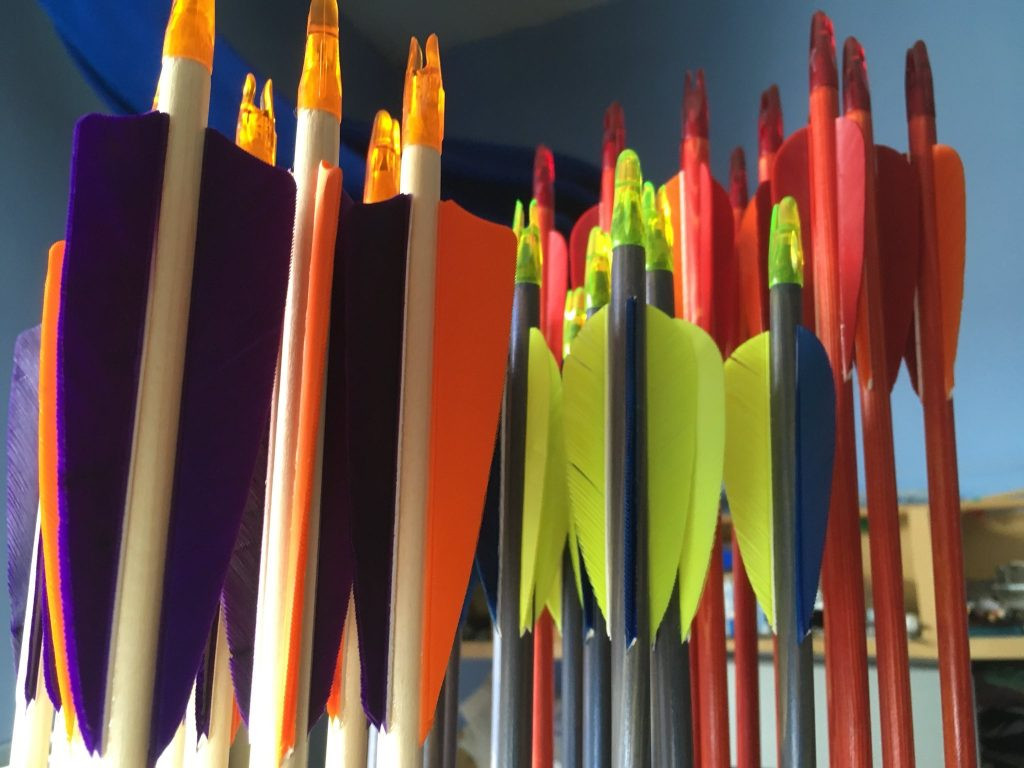Deciding on arrows is not an easy business, so we’ll try to help as much as we can.
There are some things you will need to know before ordering:
Arrow length
This depends on your draw length – most archers will have a pretty good idea about their draw length, but beginners can easily get confused. The simplest way to determine arrow length is to hold your bow out, draw to your normal anchor point, and get someone to measure it! Remember that as form develops, draw length will often develop, sometimes up to 2″ – don’t underestimate this, as an arrow which falls off the hand just as you loose can do serious damage. Also, archers shooting clout or flight (or simply trying to get more distance for whatever reason, will often over-draw – having slightly longer arrows can remove the dangers in this.
Arrow spine
Put simply, this is how bendy the arrow is. This flexibility will allow the paradox to work and your arrows to shoot straight. An arrow which is too stiff will shoot left (for a right handed archer, reverse this if you’re sinister!). An arrow which has too low a spine (is too flexible) it will often shoot to the other side, or simply wobble like hell. In the worst cases (a 20lb arrow shot from a 100lb warbow for example) the arrow will shatter and the broken shaft could be forced through the hand or forearm.
This is often a complex issue even for experienced archers, but there’s a few simple things which can affect things.
Draw weight at your draw length
Just because a bow is rated 40lb at 30″ doesn’t mean that’s what you’re drawing – if your draw length is only 28″ then it could be up to 6lbs less than that. Many bows are not accurately marked up, and self-bows can often loose weight with time. The most accurate method to measure this is with a draw weight indicator, or put simply, a spring balance.
Length of arrows
Shortening arrows will affect the spine – less length equals less flexibility. If your draw length is only 24″ you’ll need lower spined arrows than someone whose draw length is 32″. This effect is more noticeable in longbows, which get much heavier as you draw them further than with horsebows and recurved bows.
Pile weight
If you want a lightweight arrow, the light points will mean that the “bend” or paradox effect is reduced, so often lightweight flight and clout arrows will need a lower spine than heavier field and target arrows. This can often be a simple way of “tuning” longbow arrows.
Once you’ve sorted those things out then you can start having fun making your pointy sticks pretty/historically accurate/funky/scary and of course – personal!
If you're not sure of anything, just let us know as much as possible about your bow and your shooting, and we'll help you to find the best suited arrows for you.

